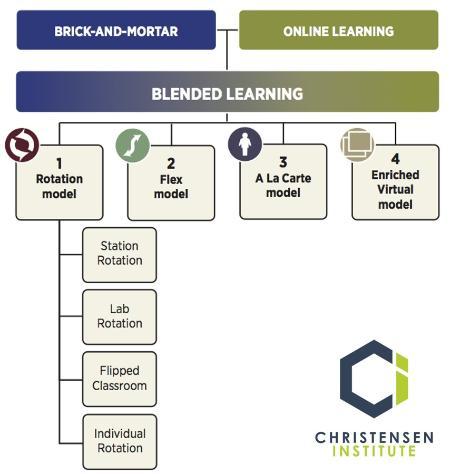
Rethinking School for Future-Ready Leaders
Disruptive thought. Personalization. Future-Ready. 22nd Century Leadership. Real-world skills. These terms have saturated the education world over the past two years as educators strive to reimagine what learning can look like in the future. The conversation can be traced back to the development of theories in blended learning, in which education experiences are redefined as a mix of online and in-person learning. Students have some control over learning time, pace, path, and place. Though the term “blended learning” is now several years old , its defining principles are still very much present in conversations and a critical starting place for intelligent technology integration in education.
So when we talk about disruptive innovation in education and personalized learning that empowers future-ready students to develop real world skills, what are we actually talking about? How do we get there?
Step 1: Greater Focus on Student-centered Learning
The first step is to encourage greater student-centered learning through a variety of teaching models. No two students learn in exactly the same way, which means that a lesson designed for an entire class is unlikely to accommodate every student. By shifting from a traditional teacher-centered, subject-oriented classroom (where the teacher is the sole instructor/lecturer) to a student-centered learning environment rich with discussion and real-world problem solving (where students learn from a variety of resources with greater self-agency), students can work in the way that best fits their learning styles. There are seven critical, well-researched models when reimagining learning environments, as fully defined by Michael B. Horn and Heather Staker from the Christensen Institute. These models include: station rotation, lab rotation, individual rotation, flipped classroom, flex, a la carte, and enriched virtual.

Step 2: Total Buy-in Across the Board
The second step is to have common adoption from teachers to administrators to the principal. Everyone needs to be invested in rethinking the learning environment so that personalized learning strategies are adopted and implemented with precision, purpose, and rigor. This requires enhanced leadership to be agile, flexible, and adaptive. Those with a growth mindset, grit, technology proficiency, and continuous improvement cycles become critical proponents in the personalized learning practice. At the core of this is understanding that the solution for a school in a given year will likely not be the solution in the following year. Just as student needs shift over time, so must programmatic approaches to school activities, schedules, and deployment of learning experiences.
Step 3: Addressing the Need for Social Emotional Learning
The third step is to acknowledge the need for rigorous, infused instruction on social emotional learning (SEL). Empathy development, social skill practice in the context of virtue, and appropriate management of one’s one feelings and behaviors are crucial tools for being productive and respectful in the world. In late April of this year, educators from all over California participated in a statewide conference specifically on SEL integration in schools. It is a crucial topic in today’s education landscape, particularly because technology must not devalue the role of real-life human interaction. There isn’t an app for deep social emotional learning—it comes through practice, real interactions, and real-world applications used in tandem with other problem-solving activities.
Now, the real work lies in imagining how these three steps operate in relationship to one another rather than in isolation. What could a model driven by project learning experiences actually look like? This effort is now a front-burner agenda item for personalized-learning leadership. Whatever the new model, it will likely be a profound evolution of our approach to preparing students for the future.

